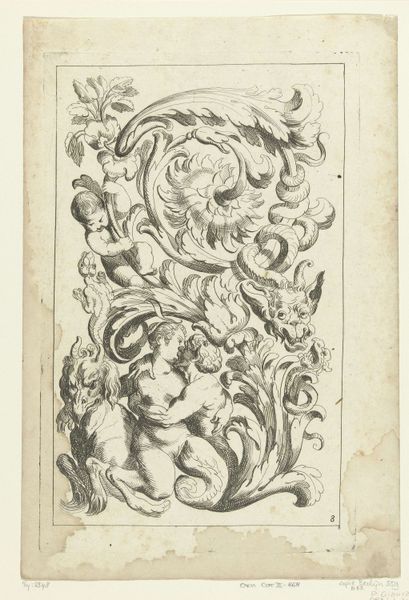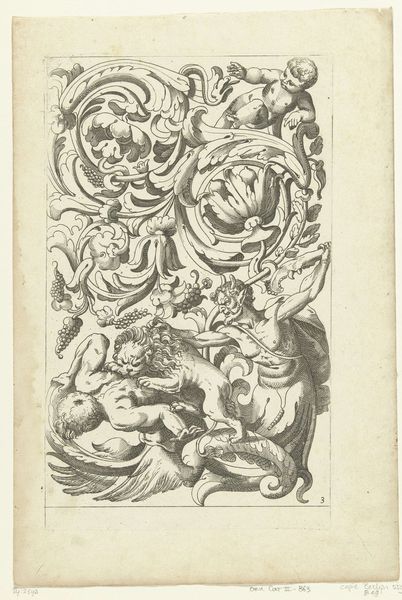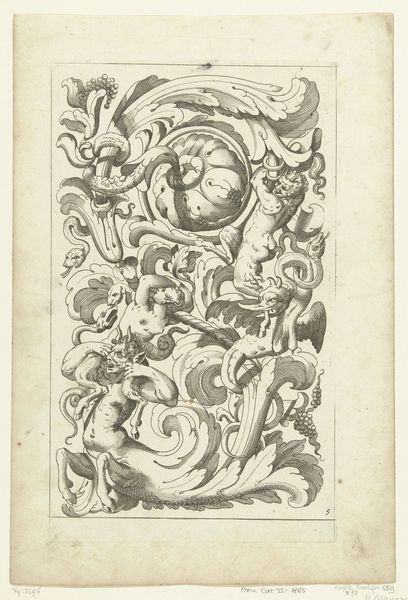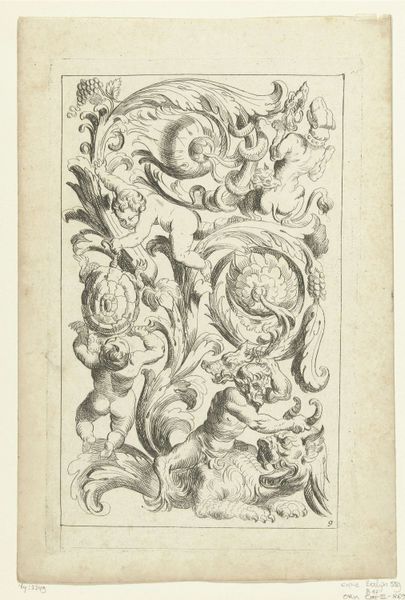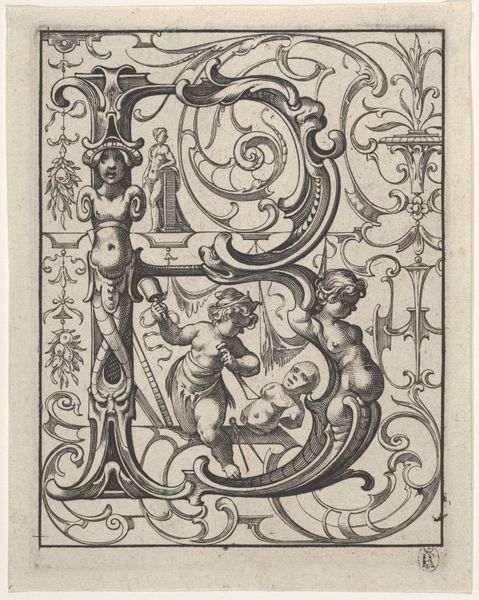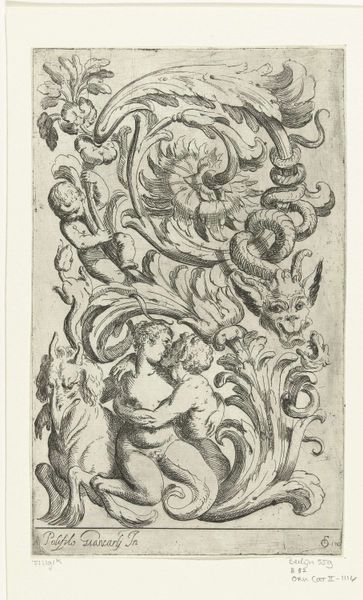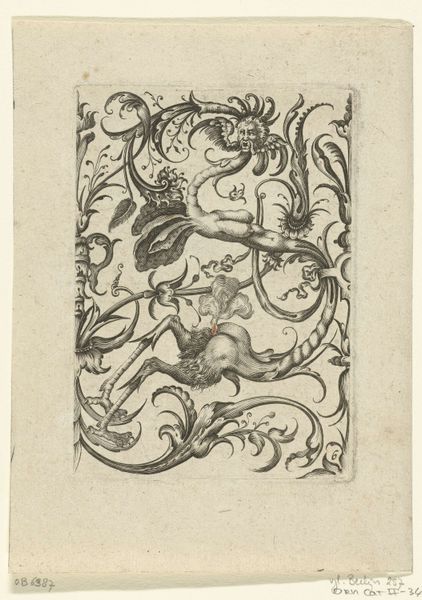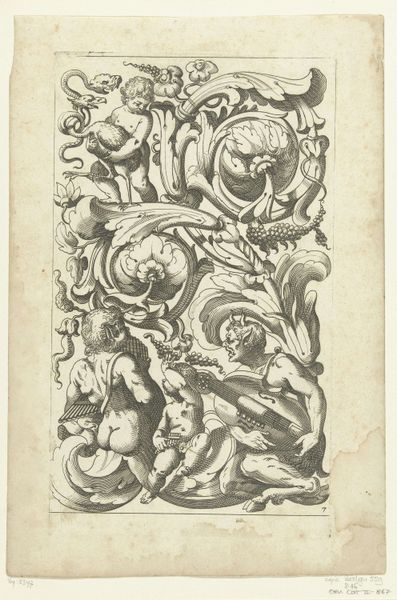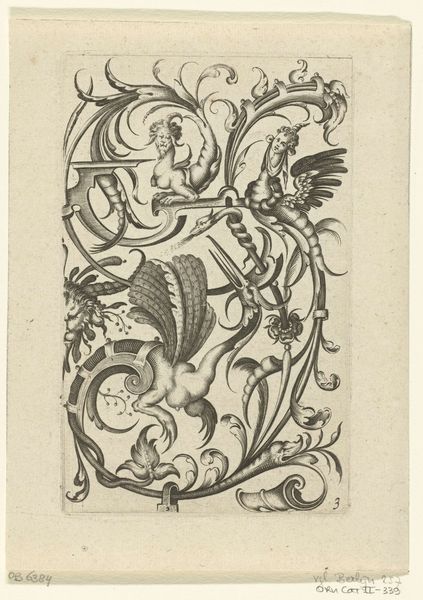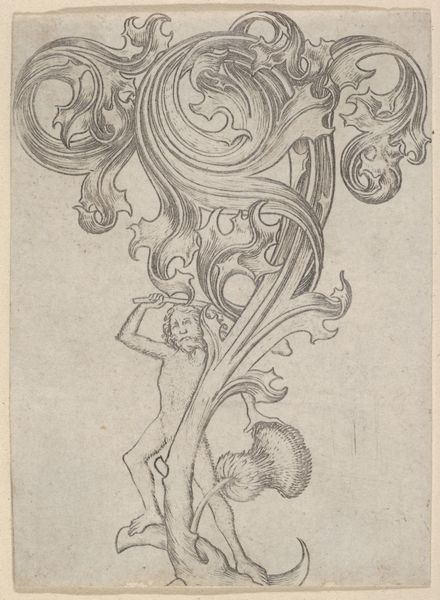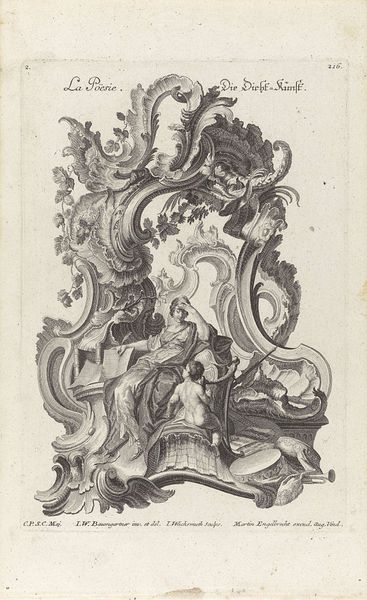
drawing, ink, engraving
#
drawing
#
baroque
#
old engraving style
#
figuration
#
ink
#
engraving
Dimensions: height 248 mm, width 155 mm
Copyright: Rijks Museum: Open Domain
Curator: This is an engraving dating back to around 1655 to 1657, entitled "Dolphin Supported by Four Children and a Triton." The piece is made with ink. What's your initial take? Editor: Overwhelmingly ornate! My first thought is one of concentrated, almost frenetic energy. All these twisting forms... it's visually busy. Curator: Right, and what's fascinating to me is the printing process itself. Consider the labor involved in carving these intricate details into a metal plate—the repetitive gestures, the artisan's deep understanding of material resistance. Editor: It really underscores the elite patronage of the arts at the time. What messages are reinforced and to whom do the artist’s toil contribute? This imagery speaks volumes about societal ideals of beauty, power, and even domination. Look at that triton—clearly muscular, male—literally holding up this structure for smaller children and a dolphin. Curator: Precisely. And we shouldn't overlook how prints like this functioned in society. They were readily available and used for dissemination. Designs spread, influencing everything from architecture to furniture making. Consider the consumption. Editor: Absolutely, engravings enabled widespread participation in constructing social narratives and ideals. In today’s social climate we should contemplate the lasting legacy of pieces such as this: What kind of aesthetic traditions and socioeconomic hierarchies are sustained and celebrated within our shared public realm? Curator: The act of mechanical reproduction democratized the consumption of the visual world, but at the cost of labor. Think of the skilled craftsman, whose identity is ultimately subsumed in the repetitive act of producing multiples. Editor: Indeed, an unsettling paradox arises when the pursuit of artistic production, aimed at enriching society, perpetuates a state of imbalance. Curator: In its totality, a whirlwind of the ornamental that masks a calculated act of repetitive labour. Editor: An important point about how aesthetics both reflect and influence our worldviews. Thank you.
Comments
No comments
Be the first to comment and join the conversation on the ultimate creative platform.
